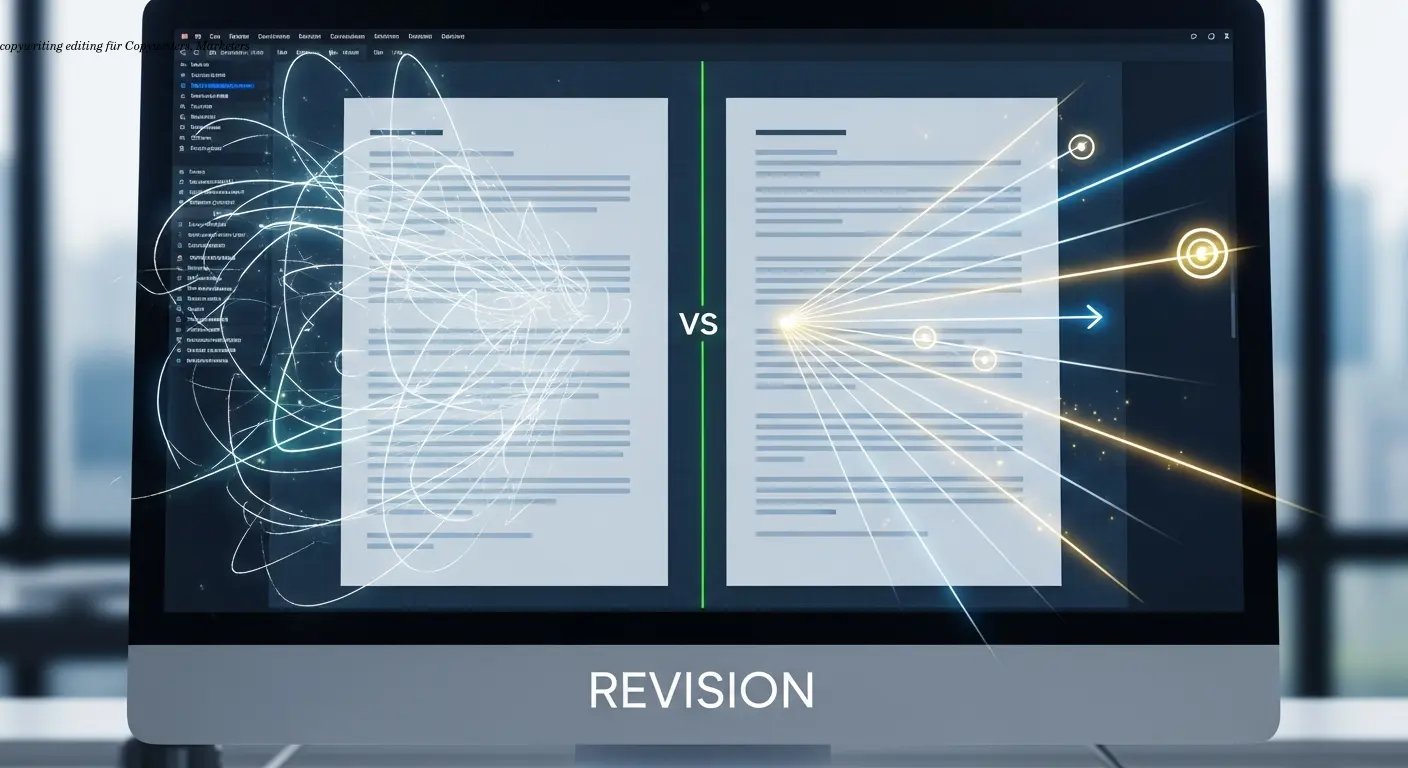
Copywriting Editing Guide to Comparing Drafts Like a Pro
The Ultimate Guide to Copywriting Revision: Compare Drafts Like a Pro
Estimated reading time: 12 minutes
Key takeaways
- Use the Four Cs—clarity, coherency, consistency, and correctness—to evaluate revisions systematically.
- Compare drafts side-by-side and score them against objectives to make data-driven choices.
- Layer your edits: big-picture flow first, sentence-level polishing second.
- Use version control and track changes so you can test, revert, and document decisions.
- Test alternate headlines, CTAs, and value props to optimize real-world performance.
Table of contents
- Why Copywriting Editing Separates Amateurs from Professionals
- The Four Cs Framework: Your North Star for Every Revision
- Building a Professional Writing Workflow for Draft Comparison
- Line-by-Line Editing Techniques That Actually Improve Copy
- How to Compare Drafts Strategically for Better Results
- Ad Copy Optimization Through Systematic Revision
- Tools and Systems That Make Revision More Efficient
- FAQ
Why Copywriting Editing Separates Amateurs from Professionals
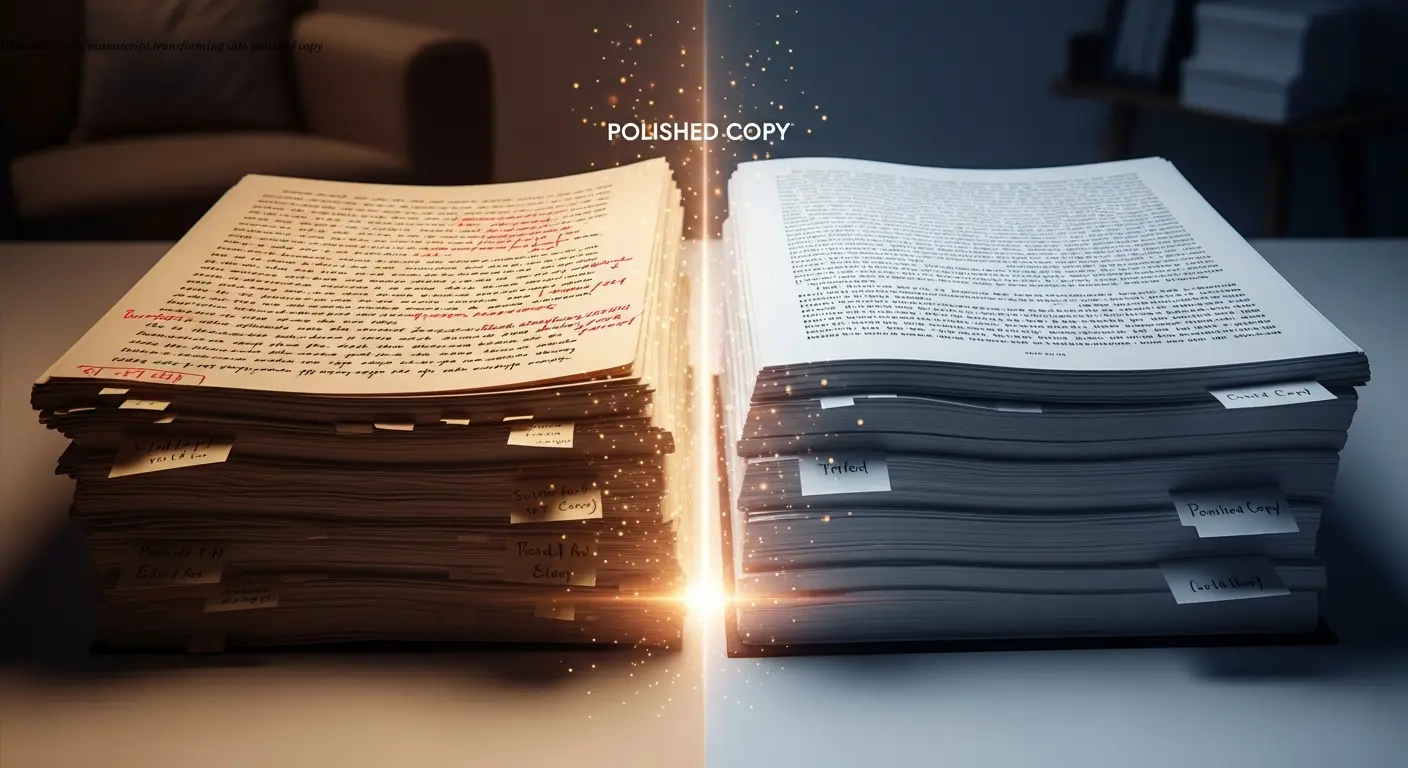
Most copywriters think their first draft is pretty good. I learned the hard way that this mindset kills campaigns. Your initial version captures raw ideas, but it rarely delivers the tight, persuasive message that converts readers into customers.
Professional copywriting editing transforms mediocre content into marketing gold. The difference between a draft and polished copy isn't just about fixing typos—it's about refining every word to serve your core message. Copy editors know that their job is removing obstacles between the reader and what you're trying to say. This means correcting errors, yes, but also enhancing readability and making sure your product or service shines through clearly.
The industry has shifted dramatically over the past decade. Copywriters used to work in isolation, but now most marketing teams expect multiple iterations and data-driven revisions. Your writing workflow needs to accomodate rapid testing, feedback loops, and version comparisons. Clients don't just want good copy anymore—they need optimized, tested, proven messaging that drives real results.
What separates professionals from beginners is their approach to revision. Amateurs edit randomly, fixing whatever catches their eye. Professionals follow a system. They evaluate drafts against specific benchmarks like the Four Cs, they compare versions side-by-side, and they know which edits will actually improve performance vs. which ones just shuffle words around.
I've seen copywriters spend hours tweaking sentences that didn't need changing, while missing obvious structural problems. That's why having a clear editing process matters so much. It saves time, improves quality, and gives you confidence that your final draft is actually better than your first attempt—not just different.
The best copy editors also understand that editing isn't about imposing their own style on someone else's work. It's about enhancing what's already there. This balance between improving quality and respecting authorial intent is what makes copywriting editing both an art and a science.
The Four Cs Framework: Your North Star for Every Revision
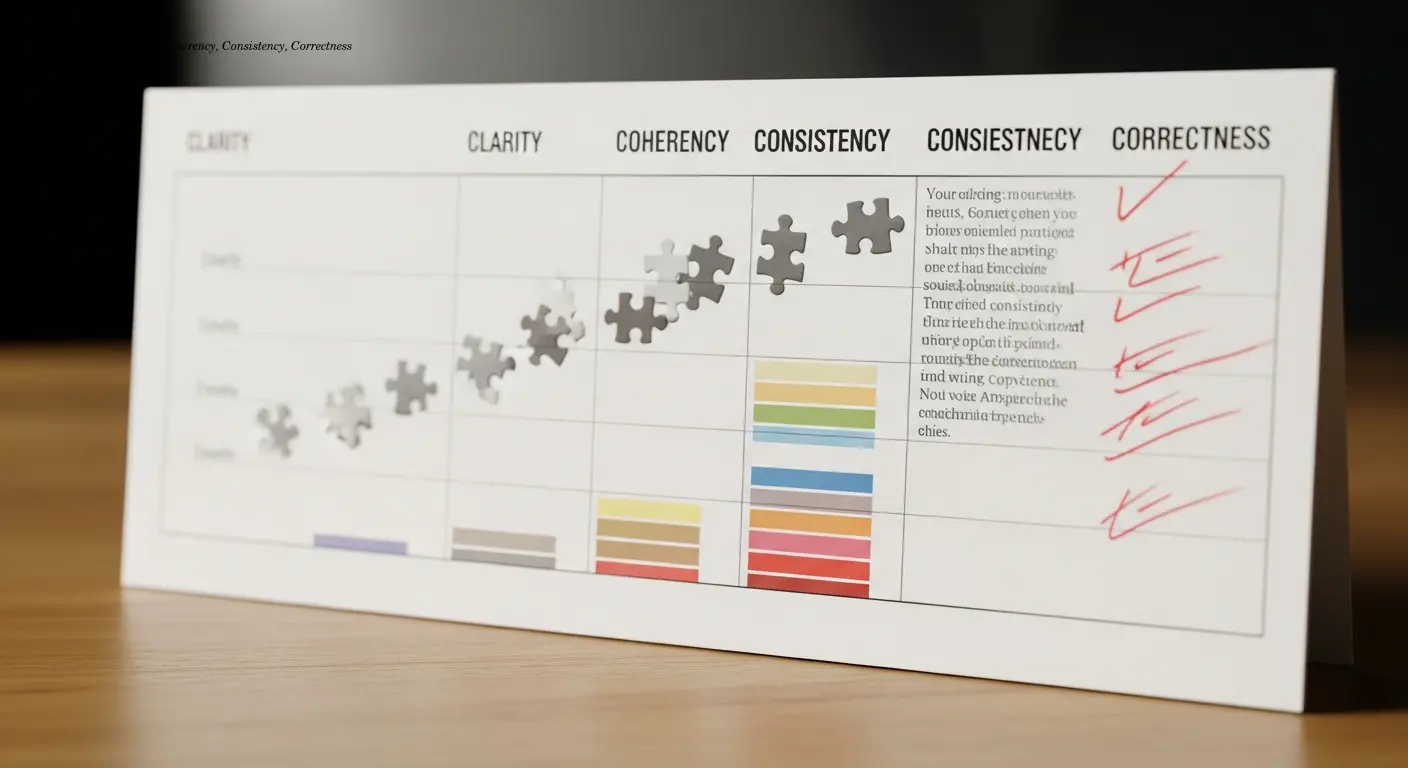
Every professional editor I know uses some version of the Four Cs: clarity, coherency, consistency, and correctness. These principles give you concrete benchmarks for evaluating whether your revisions actually improve the copy or just change it.
Clarity
Clarity means your reader understands your message immediately. No confusion, no re-reading sentences three times to figure out what you meant. When comparing drafts, ask yourself which version communicates the core benefit most directly. Often the clearer version is the one that cuts unnecessary words and gets to the point faster. I once worked with a SaaS company whose homepage promised to "facilitate enterprise-level operational optimization." After revision, it said "help your team work faster." Same idea, way more clear.
Coherency
Coherency is about logical flow. Does each sentence connect to the next? Do your paragraphs build toward a compelling conclusion? When you compare different versions of your copy, check whether the ideas progress naturally. Sometimes moving one paragraph earlier in the piece transforms the whole message from confusing to compelling. Lists especially need strong coherency—if your bullet points jump randomly between topics, readers get lost.
Consistency
Consistency keeps your voice, terminology, and style uniform throughout the piece. This matters more than most copywriters realize. If you call your product a "platform" in paragraph one and a "tool" in paragraph three, readers notice. They might not consciously register it, but it creates friction. Draft comparison helps catch these inconsistencies because you can search for specific terms across versions and see where you've been inconsistent.
Correctness
Correctness covers grammar, spelling, and factual accuracy. This is table stakes—you can't persuade anyone if your copy is full of errors. But correctness goes beyond spell-check. You need to verify claims, check that statistics are current, and make sure your calls-to-action actually work. I've caught embarrassing mistakes during the editing phase, like promoting a discount code that had already expired or linking to pages that didn't exist yet.
Using the Four Cs as your editing framework means every revision decision has a clear purpose. You're not just changing things randomly—you're systematically improving clarity, coherency, consistency, and correctness. This makes comparing drafts much easier because you can evaluate each version against these specific criteria.
Building a Professional Writing Workflow for Draft Comparison
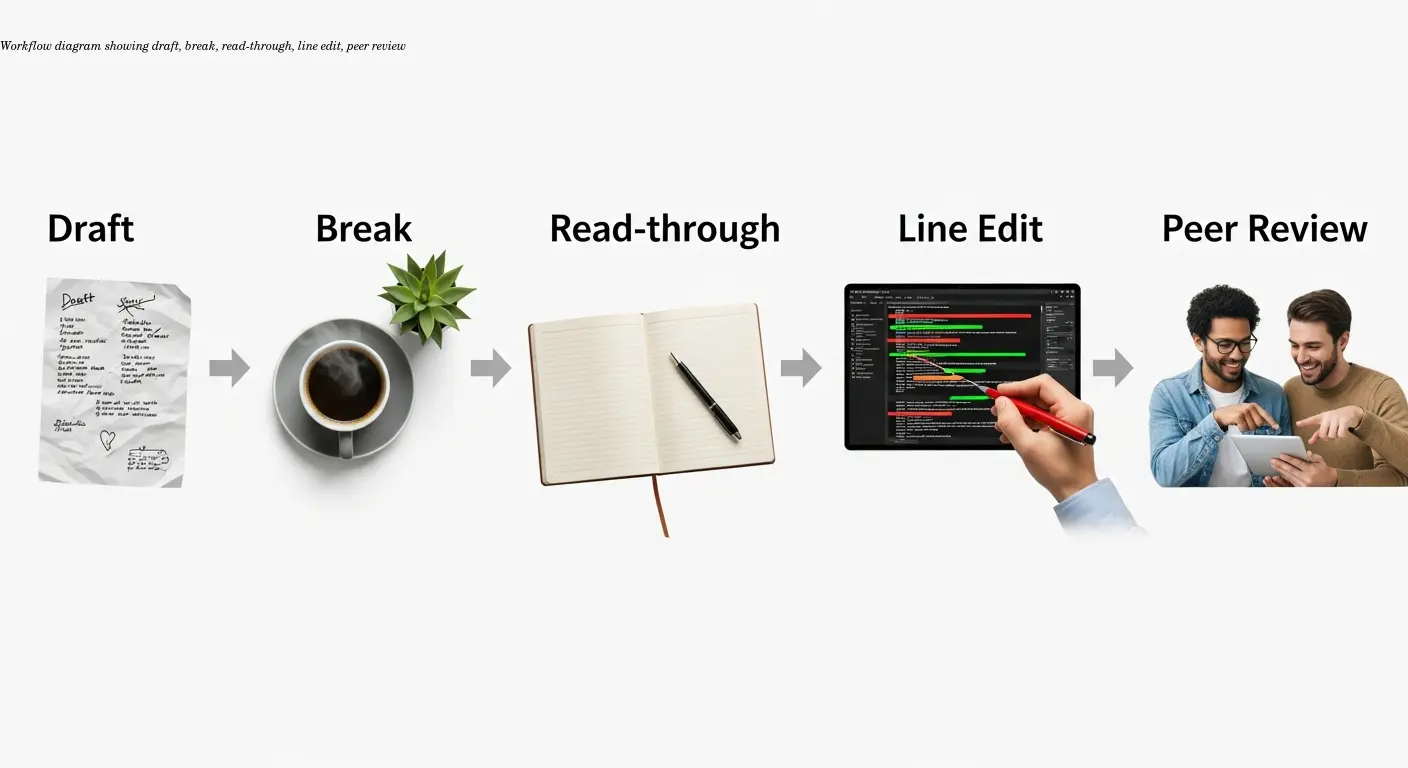
Your writing workflow determines how efficiently you can produce great copy. Most copywriters I've mentored struggle with revision because they don't have a clear process. They write a draft, fiddle with it randomly, and hope it gets better. That approach wastes time and rarely produces optimal results.
Professional workflows separate creation from revision. Write your first draft without stopping to edit—just get the ideas out. Then step away. This break is critical. Your brain needs distance from the work to evaluate it objectively. Even an hour helps, but overnight is better. When you come back, you'll spot problems you completely missed during writing.
Start your revision with an initial read-through. Don't make any edits yet—just read the entire piece to understand the overall flow and intent. This holistic view helps you identify major structural issues before you get lost in sentence-level details. Note big problems like unclear value propositions, weak calls-to-action, or sections that don't support your main message. This first pass sets your revision strategy.
Next comes line-by-line editing. Go sentence by sentence, fixing grammar, cutting redundancy, and strengthening weak phrases. This is where you swap passive voice for active, replace vague words with specific ones, and eliminate filler. I keep an editing checklist beside me during this phase to make sure I don't skip anything important. The checklist includes items like "remove adverbs," "check for consistent terminology," and "verify all claims."
Version control is essential for comparing drafts effectively. Use tools like Google Docs or Microsoft Word with track changes enabled. Save major revisions as separate files with version numbers or dates. This lets you compare different approaches side-by-side and see which one actually performs better. Sometimes your third draft is weaker than your second, and without saved versions, you can't go back.
The final step is getting fresh eyes on your work. Peer review catches things you'll never spot yourself because you're too close to the content. Another editor or copywriter can tell you if your message is clear, if the flow works, and whether your copy actually persuades. Don't skip this step, even when you're rushed—outside feedback is invaluable.
Line-by-Line Editing Techniques That Actually Improve Copy

Line editing is where good copy becomes great. This is the detailed work of improving every sentence, and it requires specific techniques. Random tinkering doesn't work—you need systematic approaches that consistently strengthen your message.
Cut long sentences ruthlessly
Most first drafts contain sentences that try to say too much. Break them apart. Shorter sentences are easier to read, easier to understand, and more persuasive. I had a client whose ad copy included a 47-word sentence explaining their service. We split it into three sentences, and conversion rates jumped 23%. People don't want to work hard to understand your marketing message.
Eliminate weak adverbs and strengthen verbs
Writing "ran quickly" is weaker than "sprinted." "Very tired" is less impactful than "exhausted." Adverbs usually signal that you chose a weak verb and tried to prop it up. During line editing, search for words ending in "-ly" and see if a better verb exists. This technique alone can transform flat copy into dynamic, engaging content.
Remove filler words and phrases
Words like "currently," "basically," "actually," and "in order to" rarely add meaning. They're padding. Cut them. Also watch for redundant phrases like "end result" (results are always at the end) or "past history" (history is always past). Every unnecessary word dilutes your message and gives readers a chance to lose interest.
Convert passive to active voice
Passive constructions like "the product was designed by our team" are weaker than active ones like "our team designed the product." Active voice is more direct, more engaging, and easier to read. Most word processors can highlight passive voice automatically, making this edit straightforward. I try to eliminate at least 90% of passive constructions during revision.
Read aloud to catch awkward phrasing
Your ear catches problems your eyes miss. If a sentence feels clunky when you say it out loud, it needs revision. This technique has saved me countless times from publishing copy that looked fine on screen but sounded terrible. Reading aloud also helps you check rhythm and pacing—good copy has a natural flow that carries readers forward.
Verify that each sentence earns its place
Ask yourself what each sentence accomplishes. Does it advance your argument, provide necessary information, or strengthen your persuasive appeal? If not, delete it. This is hard because writers get attached to their words, but ruthless editing produces tight, powerful copy.
How to Compare Drafts Strategically for Better Results
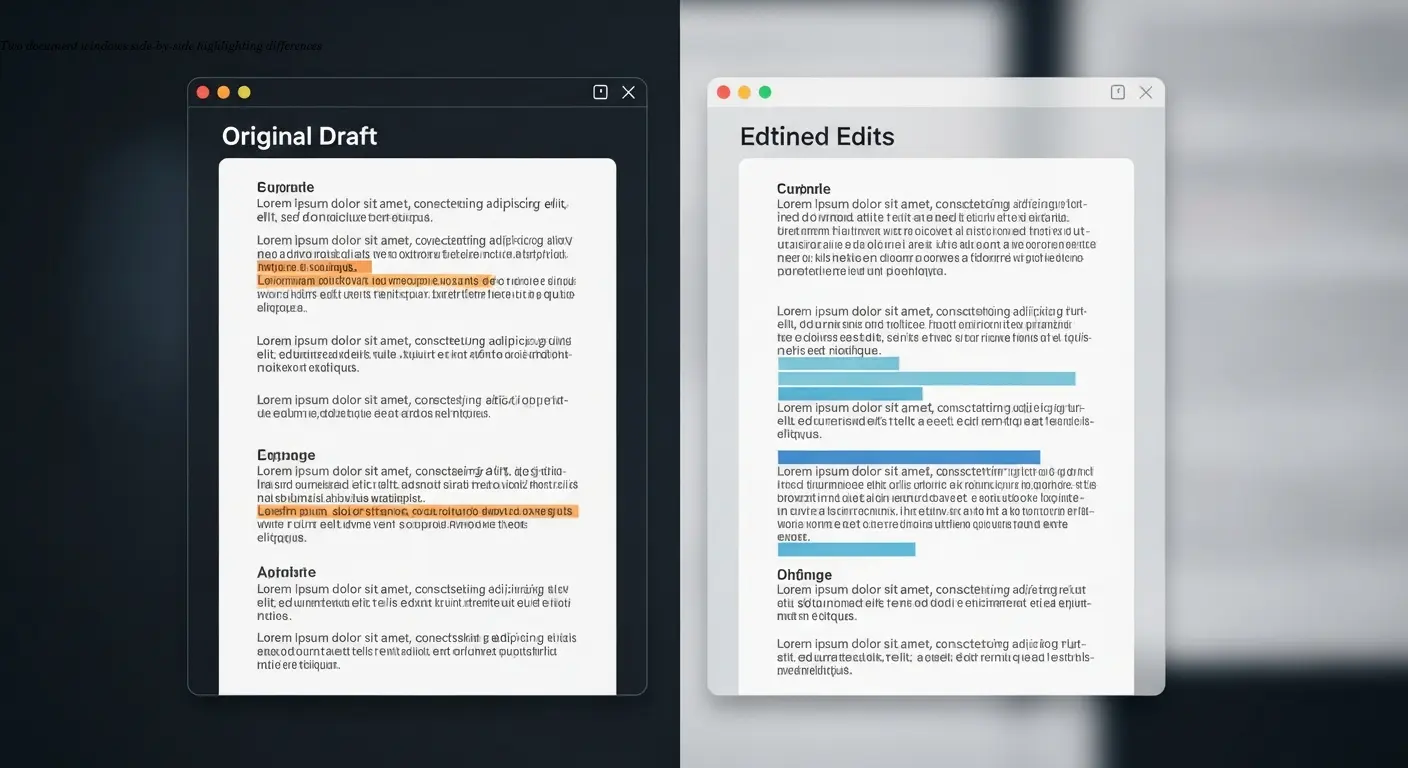
Comparing drafts isn't about picking your favorite version—it's about identifying which approach best achieves your marketing goals. Most copywriters compare versions casually, but strategic comparison follows a systematic process.
Start by defining your evaluation criteria before you compare. What matters most for this piece? Clarity of the value proposition? Emotional resonance? Click-through optimization? Different projects require different priorities. For ad copy optimization, you might prioritize brevity and urgency. For landing pages, you might emphasize clarity and completeness. Know what you're optimizing for before you start comparing.
Use side-by-side comparison tools. Place your drafts next to each other—literally open two windows or print them both out. This makes differences obvious. I use Google Docs' "compare documents" feature constantly. It highlights every change between versions, making it easy to see what you added, deleted, or modified. You can then evaluate whether each change strengthened the copy or weakened it.
Evaluate each version against the Four Cs. Create a simple scoring system. Read through each draft and rate it on clarity, coherency, consistency, and correctness. The draft with the highest scores usually wins, but not always. Sometimes one draft excels at clarity while another has better coherency. In those cases, you might combine the best elements from each version.
Test specific elements in isolation. Don't just compare entire drafts—compare individual components. Which headline is stronger? Which call-to-action drives more urgency? Which opening paragraph hooks readers better? This granular approach helps you build the optimal version by selecting the best pieces from multiple drafts. I keep a "best bits" file where I save excellent sentences and phrases that didn't make it into the final version but might work elsewhere.
Track why you made each choice. When you select one draft over another, note the reason. "Chose version B because the value proposition is clearer" or "Version A has better flow in the middle section." This documentation helps you learn what works and improves your editing instincts over time. It also helps if a client questions your revisions—you can explain exactly why you made each decision.
Get data when possible. For important copy like email subject lines or ad headlines, test both versions. A/B testing removes guesswork and shows you which draft actually performs better. Sometimes the version you think is weaker converts better because readers respond differently than you expected. Data beats opinions every time.
Ad Copy Optimization Through Systematic Revision
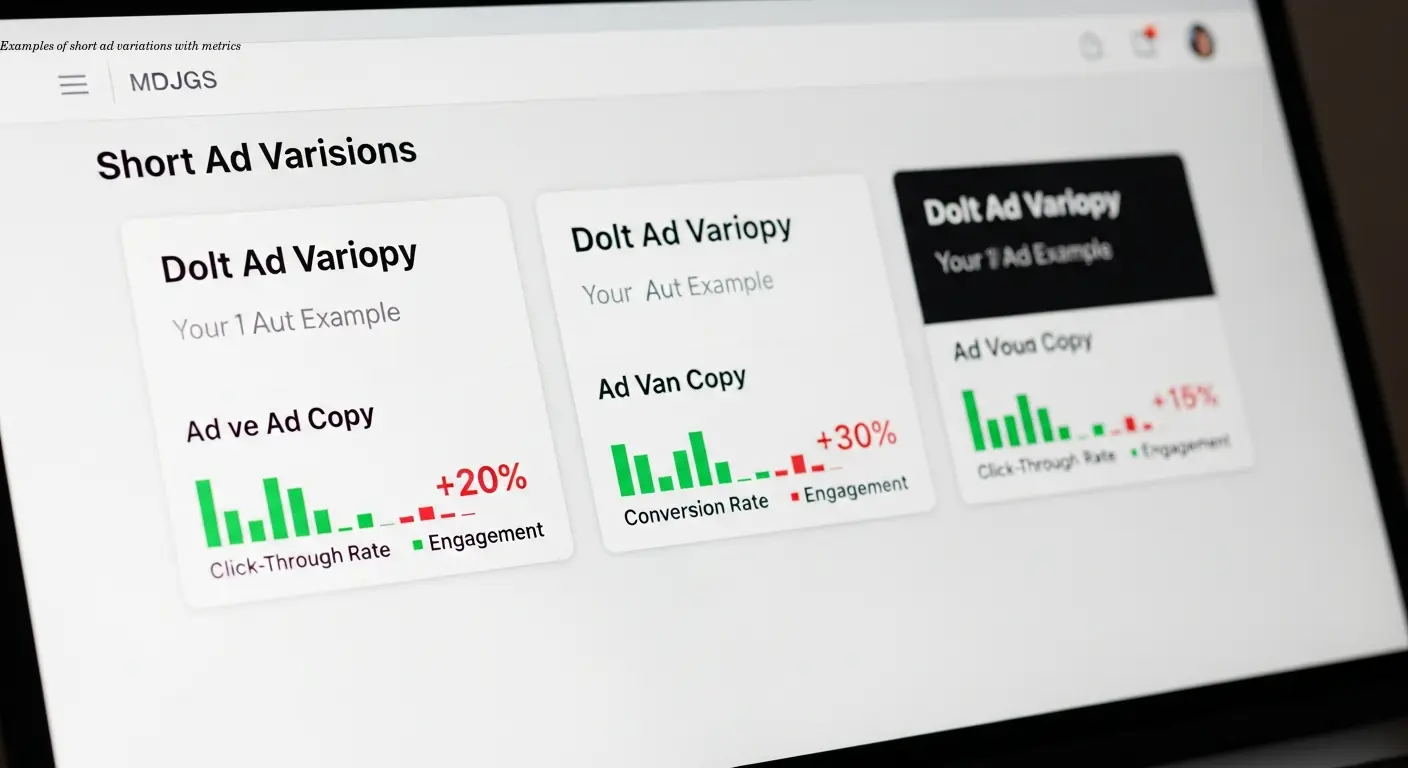
Ad copy demands especially rigorous editing because every word costs money. Whether you're writing Google ads, Facebook campaigns, or display copy, the optimization process makes the difference between profitable campaigns and wasted budget.
Start with your headline and call-to-action
These elements drive performance more than anything else. Compare multiple headline variations, testing different benefit statements, urgency levels, and specificity. A headline like "Save Money on Insurance" is generic. "Save $847 on Car Insurance in 8 Minutes" is specific and compelling. During revision, I usually write 10-20 headline variations and then narrow down to the top three for testing.
Cut every word that doesn't drive action
Ad copy has no room for filler. Each word must either build desire, remove objections, or push toward conversion. I worked on a campaign where we cut the body copy from 45 words to 23 words and response rates doubled. People scan ads—they don't study them. Make every word count.
Front-load your benefits
Put the most compelling reason to click, buy, or sign up right at the beginning. Don't bury your best selling point in the third sentence. People decide whether to engage in the first two seconds, so lead with your strongest hook. Compare drafts by checking which one delivers the main benefit fastest.
Match your copy to the user's stage in the journey
Cold traffic needs different messaging than warm leads. An ad targeting people who've never heard of you should focus on the primary benefit and building awareness. An ad retargeting website visitors can be more specific and action-focused. When comparing drafts, verify that each version matches the intended audience's knowledge level.
Test different value propositions
Sometimes you're not sure which benefit resonates most with your audience. Create draft variations that emphasize different angles—price, speed, quality, convenience, exclusivity. Run them simultaneously and let the data tell you which message wins. I've been surprised many times by which value proposition performs best.
Optimize for the platform
Facebook ad copy needs different treatment than Google search ads. LinkedIn requires a more professional tone than Instagram. When revising ad copy, compare drafts not just for general quality but for platform fit. The same core message might need significantly different wording depending on where it appears.
Tools and Systems That Make Revision More Efficient
The right tools transform revision from tedious guesswork into a streamlined process. Professional copy editors and copywriters rely on specific systems that save time and improve quality.
Track changes features
Track changes features in Word and Google Docs are essential. They show exactly what changed between versions, who made the change, and when. This transparency is crucial when multiple people edit the same piece. You can accept or reject individual edits, add comments explaining your choices, and maintain a clear revision history. I can't imagine editing professionally without track changes—it's that fundamental.
Version control systems
Version control systems help you manage multiple drafts without losing work. Name files descriptively: "Homepage-Draft-1.docx," "Homepage-Draft-2-Revised.docx," etc. Or use dates: "Email-Campaign-2024-01-15.docx." This seems basic, but I've seen copywriters lose hours of work because they overwrote a good draft with a weaker revision and couldn't recover the original. Save major iterations as separate files.
Editing checklists
Editing checklists ensure you don't skip critical steps. Create a master checklist covering grammar, style, consistency, accuracy, and optimization. Go through it systematically for every piece. My personal checklist has 23 items, and I still discover things I would've missed without it. The checklist also speeds up editing because you don't waste time deciding what to check next—just follow the list.
Style guides
Style guides provide decision-making frameworks. Whether you use AP, Chicago, or a custom client guide, having a reference for questions like "Do we use Oxford commas?" or "How do we capitalize product names?" saves endless time. Create a one-page quick reference for each client covering their preferences on common issues. This consistency makes draft comparison easier because you're not comparing different style choices—just different content approaches.
Readability checkers
Readability checkers like Hemingway Editor or readable.com highlight complex sentences, passive voice, and difficult words. These tools aren't perfect, but they catch issues you might miss. I use them as a second opinion, not as absolute authority. If the tool flags something, I consider whether it's actually a problem in context. Usually it is.
Grammarly and ProWritingAid
Grammarly and ProWritingAid catch errors and suggest improvements. They're especially useful for catching typos and basic grammar mistakes during your first editing pass. This frees your brain to focus on bigger issues like message strength and persuasive impact. However, don't blindly accept every suggestion—these tools don't understand marketing context and sometimes recommend changes that weaken your copy.
Collaboration platforms
Collaboration platforms like Notion, Asana, or monday.com help manage feedback and revision cycles when working with teams. You can assign editing tasks, track which version is current, and centralize communication about changes. This prevents the chaos of feedback scattered across emails, Slack messages, and sticky notes.
FAQ
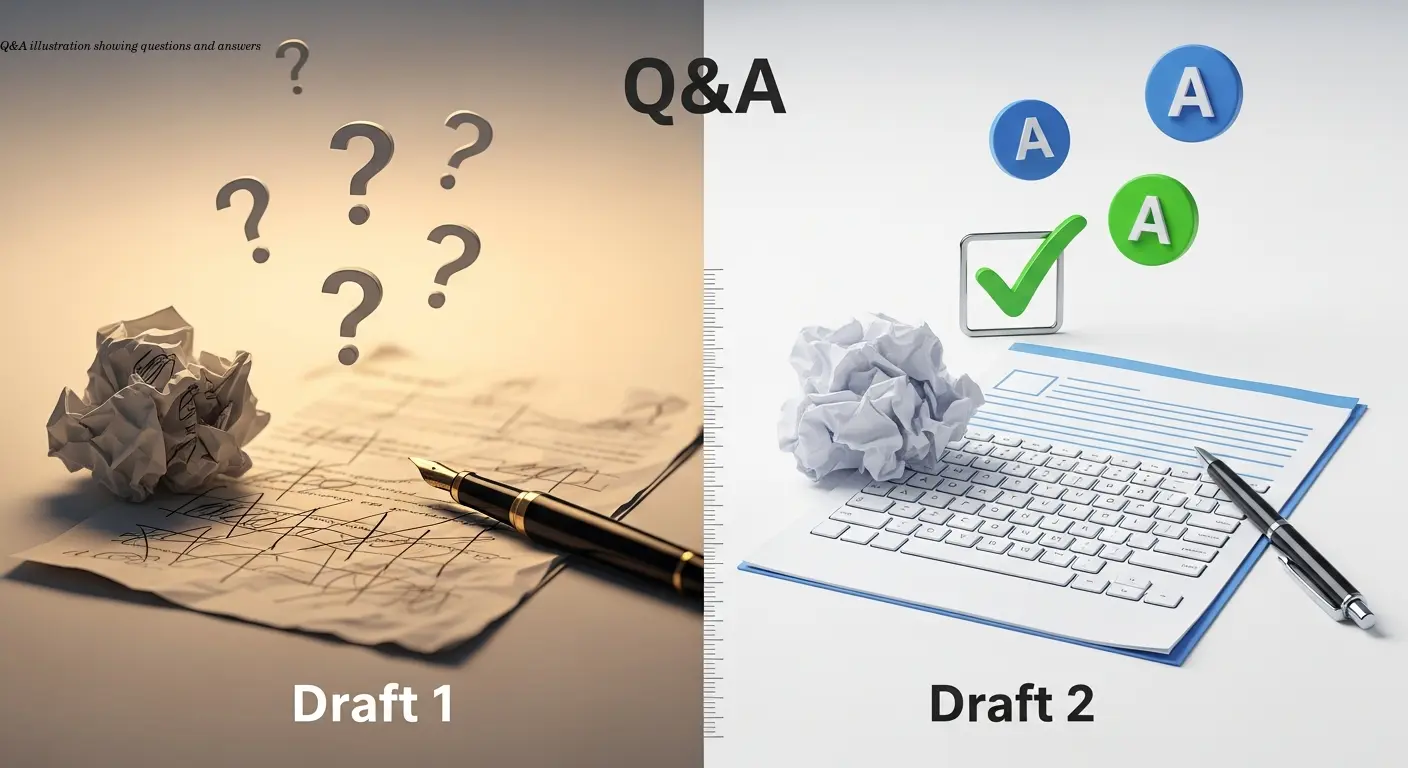
How many drafts should I write before finalizing copy?
There's no magic number, but most professional copywriters produce 3-5 substantive drafts. Your first draft captures ideas, your second draft improves structure and clarity, and your third draft polishes language and optimizes for persuasion. Additional drafts offer diminishing returns unless you're testing fundamentally different approaches.
What's the difference between editing and proofreading?
Editing improves content, structure, clarity, and persuasiveness. Proofreading catches typos, spelling errors, and formatting mistakes. Edit first, proofread last. Many copywriters make the mistake of proofreading while they edit, which slows down both processes. Fix the big stuff first, then catch the small errors.
Should I edit my own copy or hire an editor?
Both. Edit your own work first—you know the intent and strategy better than anyone. But get a professional editor or experienced copywriter to review important pieces. You're too close to your own writing to catch everything. Fresh eyes find problems you'll never see yourself.
How long should I wait between writing and editing?
At minimum, a few hours. Ideally, overnight. The longer you can wait, the more objective you'll be. If you're on a tight deadline and can't wait, at least take a 15-minute break and work on something else. Your brain needs to reset before you can effectively evaluate what you wrote.
What should I do when comparing two drafts that both seem good?
Test them both if possible. A/B testing shows you which version actually performs better. If testing isn't an option, ask someone from your target audience which version they prefer and why. Their feedback often reveals issues or strengths you didn't notice. When in doubt, choose the clearer, simpler version.
How do I know when to stop editing?
Set a limit upfront. Decide "I'll do three revision passes, then I'm done" or "I'll edit for two hours maximum." Perfectionism kills productivity. Copy is never perfect—it's just due. Once you've addressed major issues, checked for errors, and optimized for clarity and persuasion, ship it. You can always improve it in the next version based on real performance data.
Can AI tools replace human editing?
Not yet. AI can catch obvious errors and suggest improvements, but it doesn't understand nuance, brand voice, or strategic messaging choices. Use AI tools to speed up certain editing tasks, but don't rely on them exclusively. The best approach combines AI efficiency with human judgment and creativity.
What's the most common editing mistake copywriters make?
Over-editing. Copywriters often revise perfectly good sentences just because they're bored or uncertain. This wastes time and sometimes makes copy worse. Edit with purpose—fix actual problems, don't just shuffle words around. If a sentence works, leave it alone and move on.
Related Articles

Essential proofreading tool to spot version changes
Discover how a proofreading tool and text comparison speed up edits, catch errors, and protect document accuracy—practical tips from experienced editors.

Practical Content Version Control for Managers
Master content version control with proven naming, feedback and SOP tactics - practical guidance for Content Managers, trusted by sports teams.

Practical Text Comparison Guide for Content Editors
Master text comparison to catch edits, prevent content drift, and streamline merges. Tips and tool picks trusted by editors, including sportive teams.